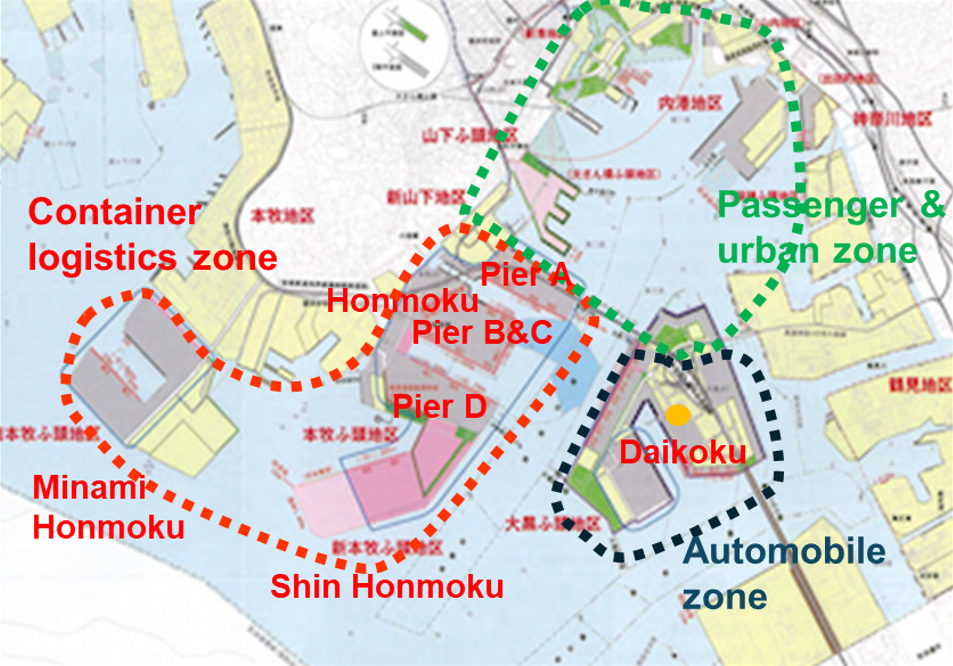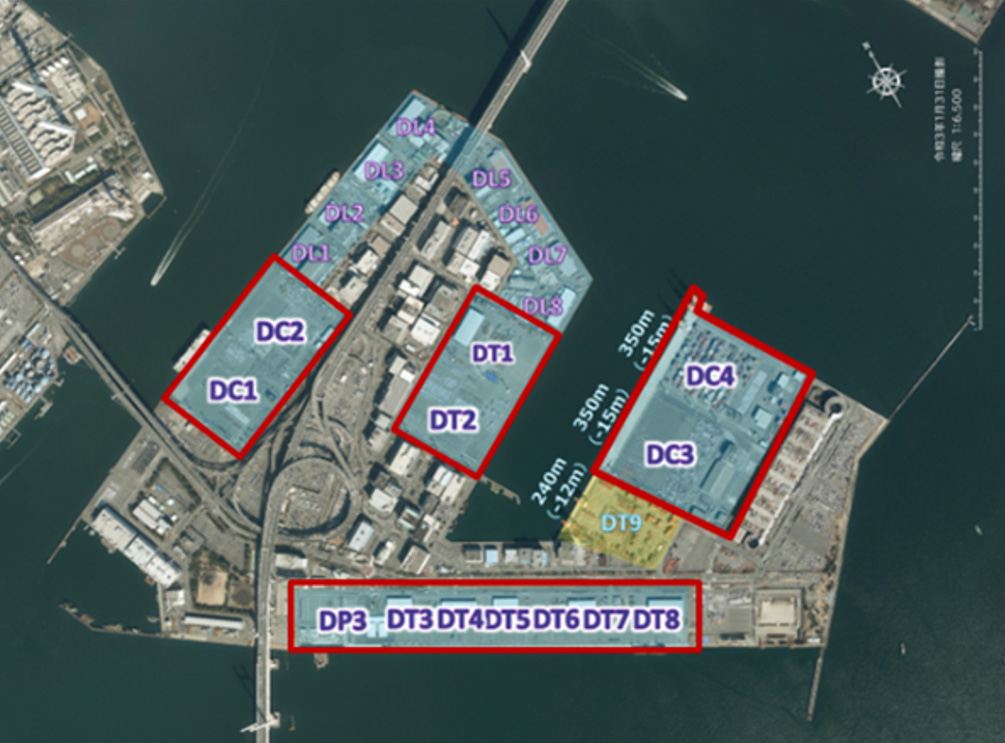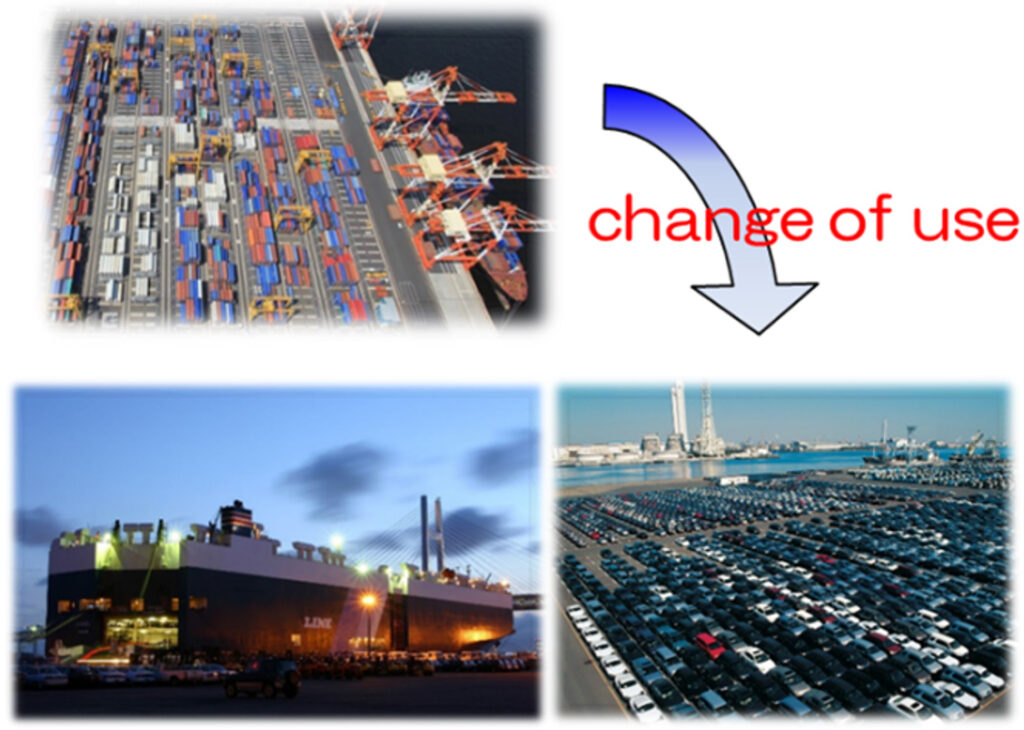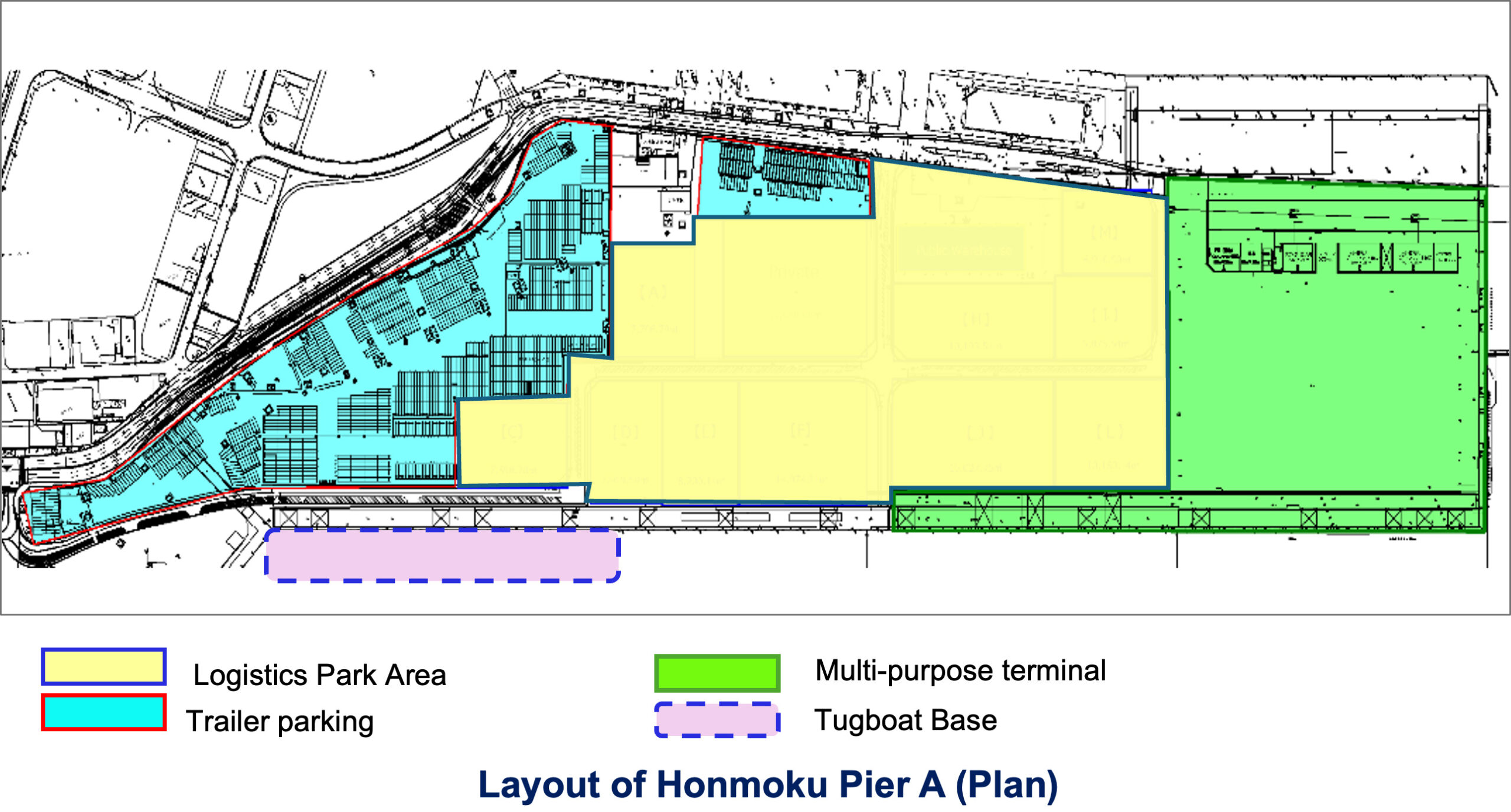Enhancing Automobile Handling Functions
Automobile-related products account for approximately 50% of the export cargo handled at the Port of Yokohama.
Daikoku Pier has improved its quays and yards and converted its container terminals into automobile terminals.
The Daikoku C-3 and the Daikoku C-4 were converted from container terminals to automobile terminals in 2020 and 2022 respectively. Furthermore, P3 and T3 to 8 were redeveloped, creating one of the longest quays in Japan of 1,400 m.
Daikoku Pier has become the largest automobile handling base in East Japan, capable of simultaneously berthing 11 large car carriers.

Automobile terminal at Daikoku Pier
Enhancing Container Handling Function
-The Strategic International Container Ports Policy-
Japanese Ministry of Land, Infrastructure, Transport and Tourism laid down the International Container Strategic Ports policy to enhance and increase direct services to multiple regions, including North America, Europe, Central and South America, and Africa, and bolster Japan’s supply chain. Then in August 2010, the Keihin Ports, including the Port of Yokohama, was designated as a Strategic International Container Port. At the Port of Yokohama, YPC was designated as the special port operating company in December 2012 to implement this policy in managing container terminals. Subsequently, in January 2016, our Container Terminal Operations section was spun off to establish the new Yokohama Kawasaki International Port Corporation (YKIP). Then in March 2016, the company was newly designated as the port operating company. YKIP currently constructions and maintains the container terminal facilities, which are run by shipping companies and operators leasing the facilities from YKIP.
Development of logistics bases
Logistics hubs in coastal areas offer convenience in terms of customs-related benefits and swift cargo delivery, and they have also attracted attention for their transportation efficiency and creation of employment. The Port of Yokohama is promoting its development as a logistics hub enhancing functions for handling imported cargo, in addition to its traditional role in exporting goods.
Since 2017, an area within the container terminal, Honmoku Pier A, is being developed into a logistics facility providing advanced logistics services, including distribution processing and temperature control. There are plans to have a total of 10 logistics facilities up and running by FY2025.
Environmentally friendly
We engage proactively in energy-saving initiatives at the port by installing solar power generation equipment, LED lighting, etc., in aiming to develop an environmentally friendly port. We also strive in activities to realize a carbon-neutral port (CNP).





